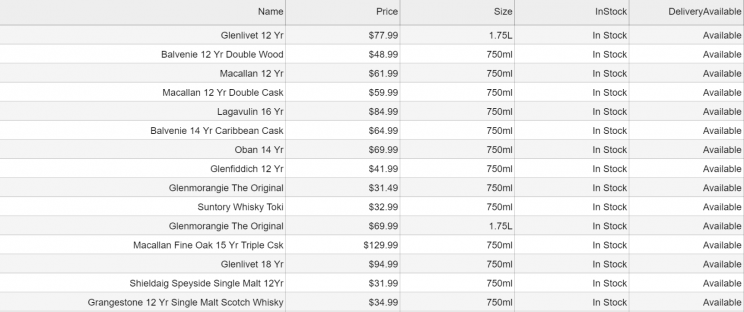


But the demo I saw, and almost all the documentation and blog posts about this use Node.js. I wanted my script to be run from a server that never turns off.Īt the NICAR 2018 conference, I learned about serverless applications using AWS Lambda, so this seemed like an ideal solution. They can get unplugged accidentally, or restart because of an update.
#Webscraper for safari mac
I could have run the script on my computer with a cron job on Mac or a scheduled task on Windows.īut desktop computers are unreliable. I wanted to scrape a government website that is regularly updated every night, detect new additions, alert me by email when something is found, and save the results. With this post, I hope to spare you from wanting to smash all computers with a sledgehammer. I recently spent several frustrating weeks trying to deploy a Selenium web scraper that runs every night on its own and saves the results to a database on Amazon S3. According to this GitHub issue, these versions work well together: What did work was the following:ĮDIT: The versions above are no longer supported. It’s based on this guide, but it didn’t work for me because the versions of Selenium, headless Chrome and chromedriver were incompatible.
#Webscraper for safari how to
Let myNumber = NSNumberFormatter().numberFromString(myFinalString)!.TL DR: This post details how to get a web scraper running on AWS Lambda using Selenium and a headless Chrome browser, while using Docker to test locally. Let myFinalString = myShortenedString.substringToIndex(advance(string1.startIndex, 4)) // deletes all but the first 4 chars of the right-hand part of the string Let myShortenedString = myString.substringFromIndex(advance(myString.startIndex, startIndex)) // gets the right-hand part of the string Let startIndex = advance(distance(comed.startIndex, starter), -6) // backs up the index from where the range was found Var range = myString.rangeOfString("per kWh") Var myString = something something from NSString(data: data!, encoding: NSUTF8StringEncoding)
#Webscraper for safari code
Once I get past that, I can use the following code to clip out just the data I need. Print(NSString(data: data!, encoding: NSUTF8StringEncoding))īut while I can print it, I can't seem to get the NSString data into a Swift string. The code in my first post nicely prints these couple lines to the console, and the numerical result I need is in the printed output So the "page" I need to extract the data from is much smaller, just a couple lines of text. I've since learned that the data I need can be accessed by directly linking to a servlet in a browser, see here for instance. Well I've gotten a lot closer but I'm still struggling. PS: in the example of how to inject a script, they used "Wikipedia" as an example site, so you can search for that on the asciiwwdc2014 site to find sessions that used that term. In the end I was able to get a form listener installed, so when a user logged in I could determine the email address used. I don't know JavaScript so this was a real PITA. In brief, you use a WKWebView (and perhaps you can make it invisible or offscreen), you tell it to connect to a URL, at some point you add your own script, then when the page has loaded, you invoke your script, which posts back some data.

In the end I froze the video (or slide) and did a screen print to access the otherwise unavailable source code. One the WWDC 2014 sessions covered this topic, I believe it was "Introducing the Modern WebKit API". This is all terribly complicated (for me it was), and daunting as there are few examples to go by. You script can call one of the existing scripts, and return a value to you in a "post back" message. If the web page has scripts, its possible for you to inject your own script into the downloaded page, then call it.


 0 kommentar(er)
0 kommentar(er)
